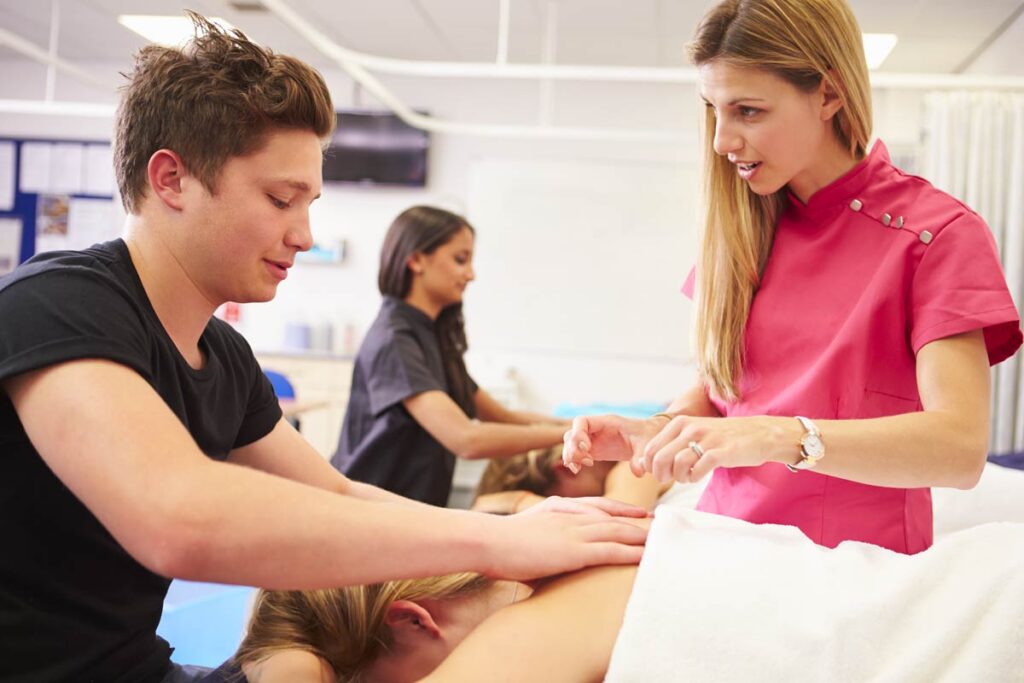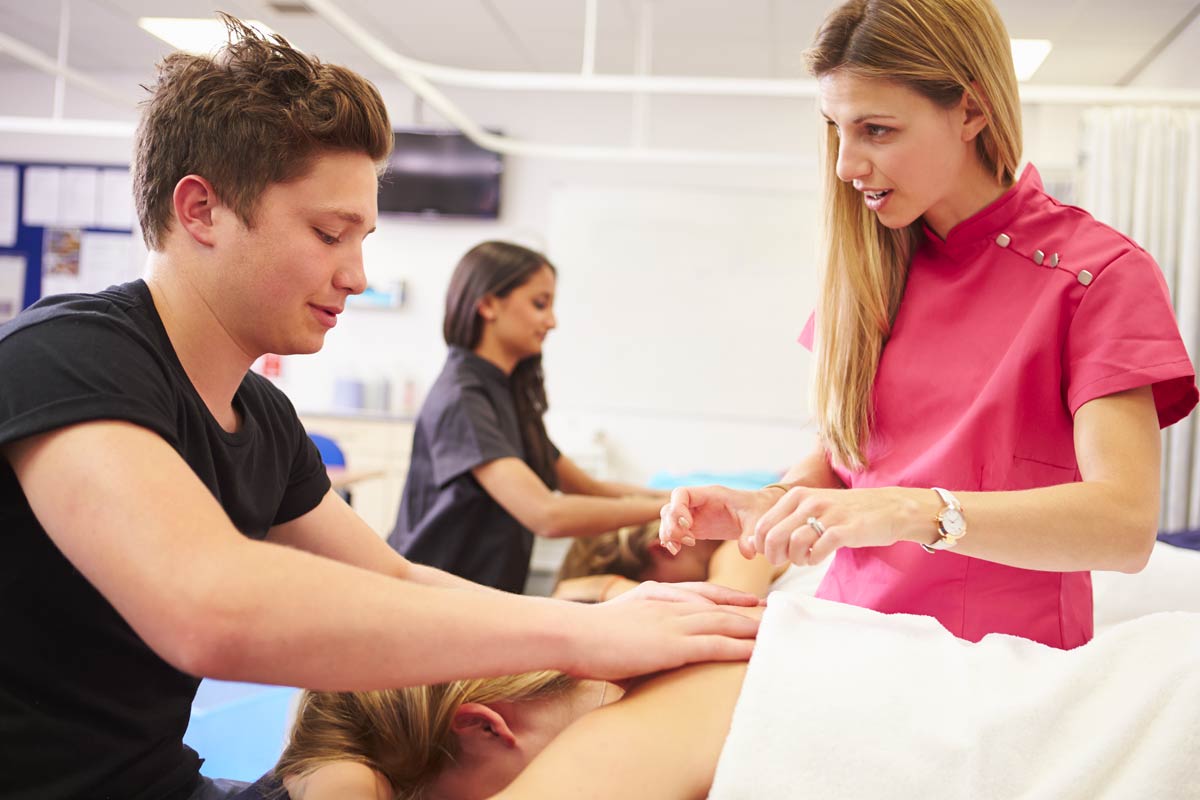
Student Massage: Balancing Academics and Well-being Through Therapeutic Touch
The rigors of academic life can take a significant toll on a student’s physical and mental well-being. Long hours of studying, coupled with the pressure to perform, often lead to stress, anxiety, and physical discomfort. In recent years, student massage has emerged as a valuable tool for managing these challenges, offering a proactive approach to health and wellness that complements traditional academic pursuits. This article delves into the benefits, types, and accessibility of massage therapy tailored specifically for students.
The Growing Need for Student Wellness
The contemporary academic landscape is intensely competitive. Students are frequently juggling multiple responsibilities, including coursework, extracurricular activities, part-time jobs, and social commitments. This constant pressure can manifest in various physical and psychological ailments. Common issues include:
- Stress and Anxiety: The pressure to achieve high grades and secure future opportunities can lead to chronic stress and anxiety disorders.
- Muscle Tension and Pain: Prolonged sitting, poor posture while studying, and carrying heavy backpacks contribute to muscle tension, particularly in the neck, shoulders, and back.
- Sleep Disturbances: Erratic sleep schedules and stress-induced insomnia are common among students, impacting their cognitive function and overall health.
- Headaches and Migraines: Stress and muscle tension can trigger headaches and migraines, further disrupting academic performance.
Recognizing these challenges, educational institutions and wellness advocates are increasingly promoting holistic approaches to student health, with student massage playing a crucial role.
Benefits of Massage Therapy for Students
Student massage offers a wide array of benefits that directly address the physical and mental stressors associated with academic life:
Stress Reduction
Massage therapy is known to lower cortisol levels, the hormone associated with stress. By reducing cortisol, massage helps students feel more relaxed and less overwhelmed. This, in turn, can improve their ability to focus and concentrate on their studies.
Muscle Tension Relief
Massage techniques such as Swedish massage and deep tissue massage target muscle knots and tension, alleviating pain and improving range of motion. This is particularly beneficial for students who spend long hours hunched over books or computers.
Improved Sleep Quality
Regular massage can promote relaxation and reduce anxiety, leading to improved sleep quality. Better sleep translates to enhanced cognitive function, memory consolidation, and overall academic performance.
Enhanced Circulation
Massage stimulates blood flow, delivering oxygen and nutrients to muscles and tissues. This improved circulation can reduce fatigue and increase energy levels, helping students stay alert and focused throughout the day.
Headache and Migraine Relief
Massage can help relieve tension headaches and migraines by relaxing muscles in the neck and shoulders. It can also reduce the frequency and intensity of these headaches over time.
Boosting the Immune System
Studies suggest that massage can enhance immune function by increasing the activity of white blood cells, which are crucial for fighting off infections. This can be particularly beneficial for students who are often exposed to germs in crowded classrooms and dormitories.
Improved Mental Clarity
By reducing stress and promoting relaxation, massage can improve mental clarity and cognitive function. Students who receive regular massage therapy often report feeling more focused, alert, and able to handle academic challenges.
Types of Massage Therapy Suitable for Students
Several types of massage therapy are particularly well-suited for addressing the specific needs of students:
Swedish Massage
Swedish massage is a gentle and relaxing technique that uses long strokes, kneading, and circular movements to ease muscle tension and promote relaxation. It is an excellent choice for students who are new to massage or who prefer a lighter touch.
Deep Tissue Massage
Deep tissue massage targets deeper layers of muscle tissue to release chronic tension and knots. It is often used to address specific areas of pain and discomfort, such as the neck, shoulders, and back.
Sports Massage
Sports massage is designed to enhance athletic performance and prevent injuries. It can be beneficial for students who participate in sports or other physical activities. [See also: Benefits of Sports Massage for Athletes]
Chair Massage
Chair massage is a convenient and accessible option that can be performed in a seated position. It typically focuses on the neck, shoulders, and back, making it ideal for relieving tension caused by prolonged sitting and studying. Many universities and colleges offer chair massage sessions during exam periods or other stressful times.
Aromatherapy Massage
Aromatherapy massage combines the benefits of massage with the therapeutic properties of essential oils. Certain essential oils, such as lavender and chamomile, can promote relaxation and reduce anxiety, making this type of massage particularly beneficial for students experiencing stress.
Accessing Student Massage Services
Several options are available for students seeking massage therapy:
University Health Centers
Many universities and colleges offer massage therapy services through their health centers. These services are often subsidized, making them more affordable for students.
Student Discounts at Local Massage Clinics
Many massage clinics offer student discounts or packages. Be sure to inquire about student rates when booking an appointment.
Massage Schools
Massage schools often offer discounted massage services performed by students under the supervision of licensed instructors. This can be a cost-effective way to experience massage therapy.
Mobile Massage Services
Mobile massage services bring the massage therapist to you, offering convenience and flexibility. This can be a good option for students who have limited time or transportation options.
Self-Massage Techniques
Students can also learn self-massage techniques to relieve tension and pain between professional massage sessions. Simple techniques, such as neck stretches and shoulder rolls, can be easily incorporated into their daily routine.
Considerations for Student Massage
Before seeking student massage, it’s important to consider the following:
- Qualifications of the Massage Therapist: Ensure that the massage therapist is licensed and qualified to provide massage therapy.
- Health Conditions: Inform the massage therapist about any underlying health conditions or medications you are taking.
- Personal Preferences: Communicate your preferences regarding pressure, technique, and areas of focus.
- Budget: Consider your budget and explore options that fit your financial constraints.
Integrating Massage into a Student Wellness Plan
Student massage is most effective when integrated into a comprehensive wellness plan that includes regular exercise, a healthy diet, adequate sleep, and stress management techniques. By prioritizing their physical and mental well-being, students can enhance their academic performance and overall quality of life.
The Future of Student Massage
As awareness of the benefits of massage therapy continues to grow, it is likely that student massage will become an increasingly integral part of student wellness programs. Educational institutions are recognizing the importance of supporting students’ holistic health, and massage therapy offers a valuable tool for achieving this goal. [See also: The Role of Universities in Promoting Student Mental Health]
In conclusion, student massage provides a proactive and effective way for students to manage stress, relieve muscle tension, improve sleep quality, and enhance their overall well-being. By incorporating massage therapy into their wellness routine, students can better navigate the challenges of academic life and thrive both personally and academically. The availability and accessibility of student massage options are expanding, making it easier than ever for students to prioritize their health and invest in their future. Investing in student massage is investing in their academic success and long-term well-being. Student massage is a valuable resource. Many students find student massage beneficial. The impact of student massage is significant. Consider student massage for your well-being. Explore the benefits of student massage. Understand the importance of student massage. Choosing student massage is a positive step. The rise of student massage programs shows the growing demand. The effectiveness of student massage is well-documented. Embrace student massage as part of your wellness journey. Support initiatives that promote student massage. Discover the transformative power of student massage.

